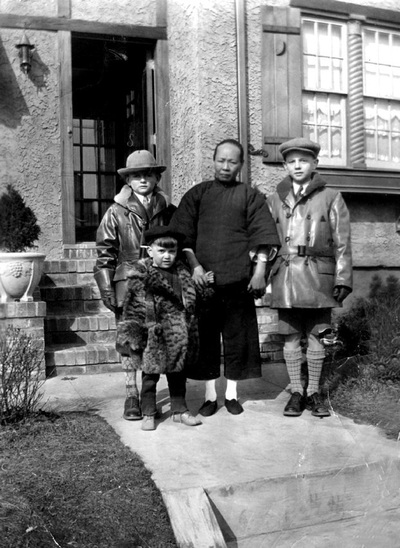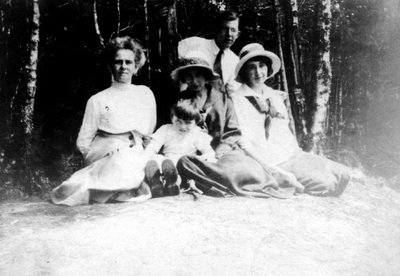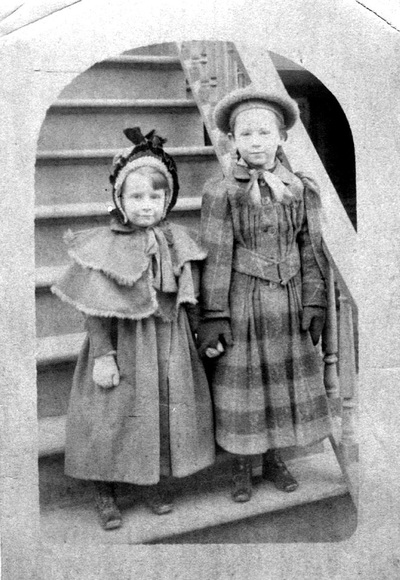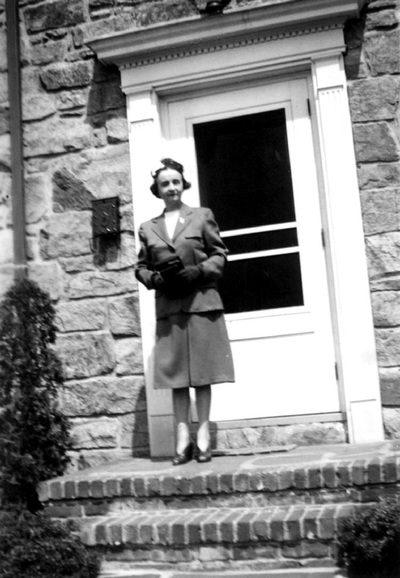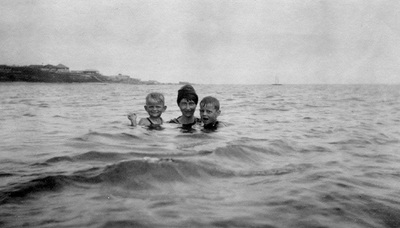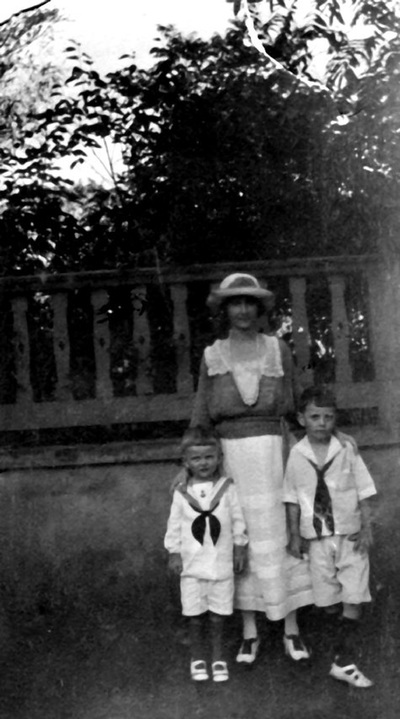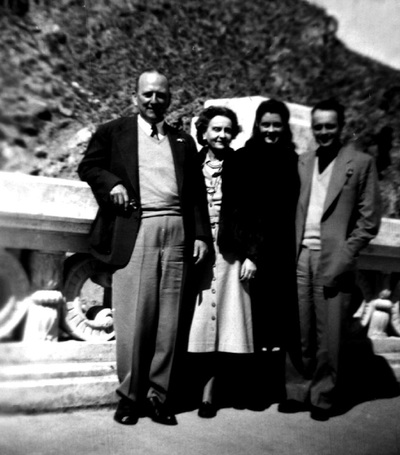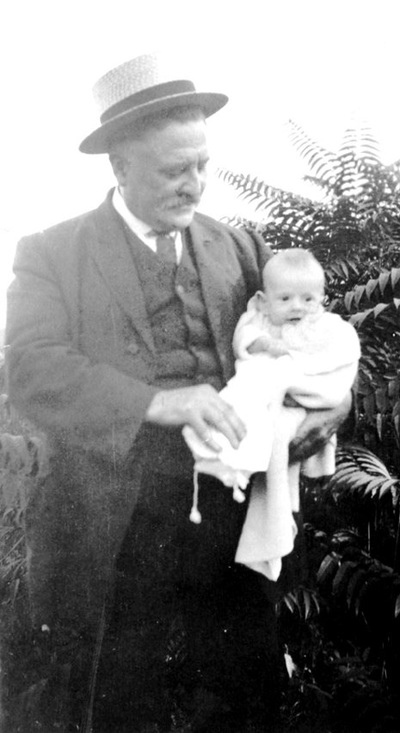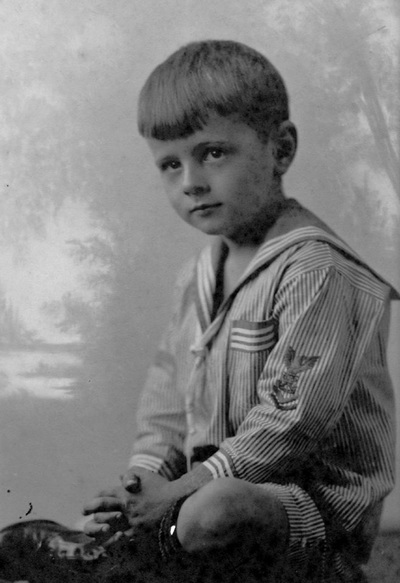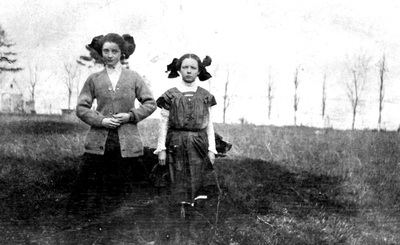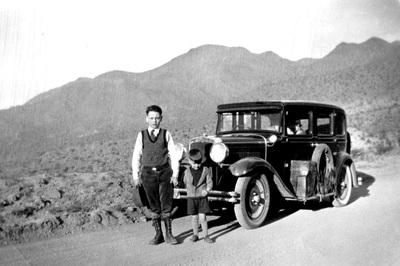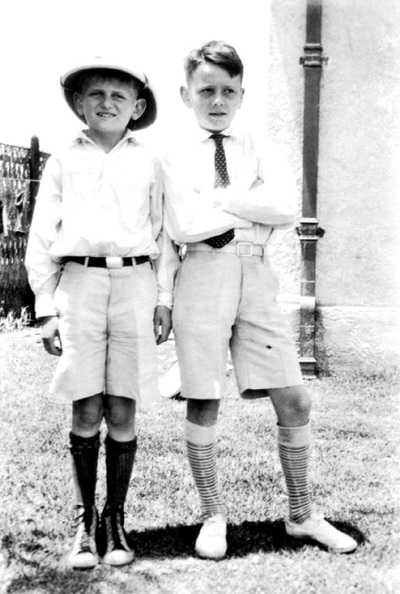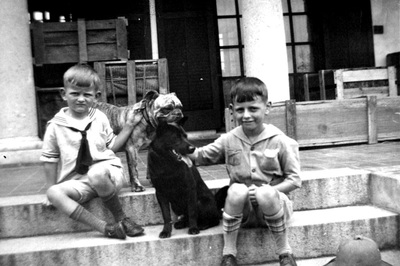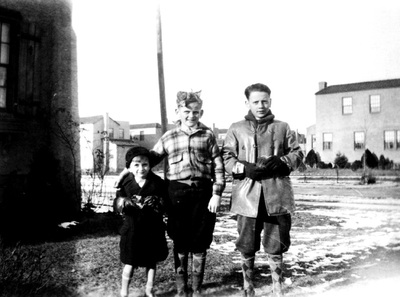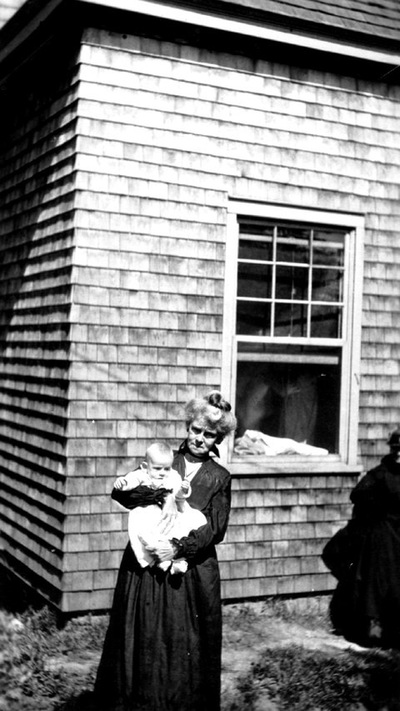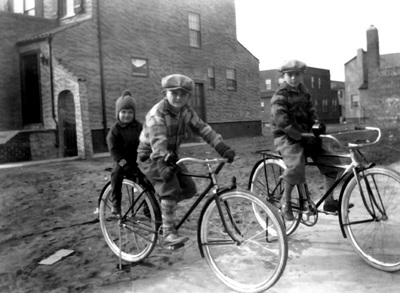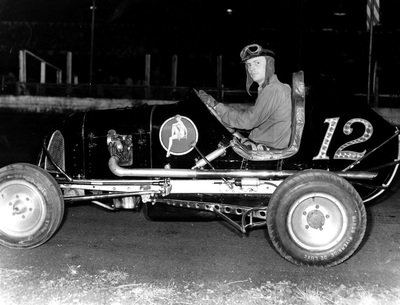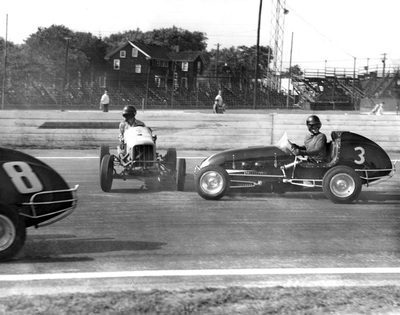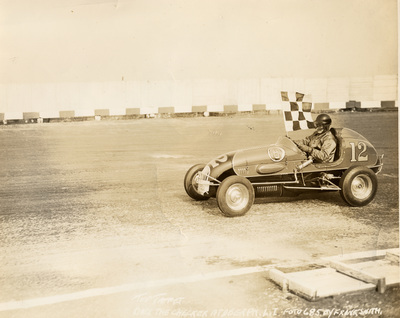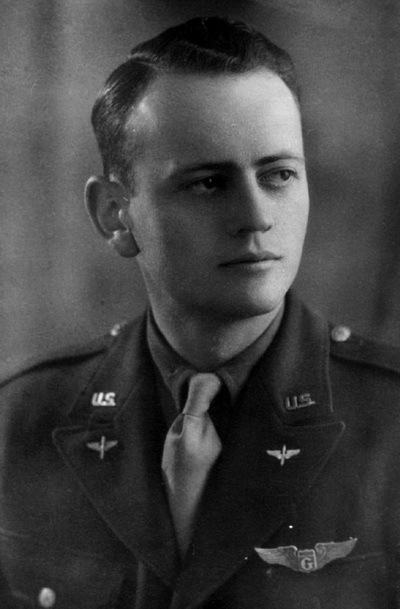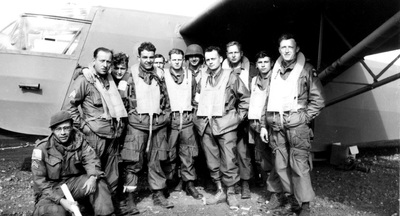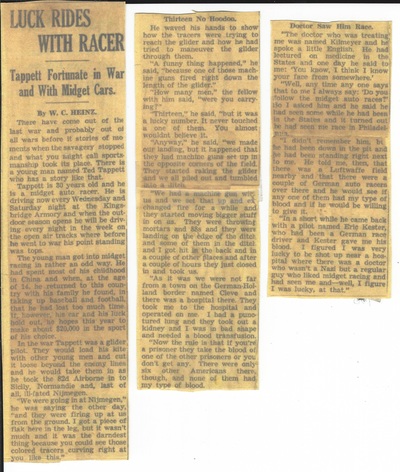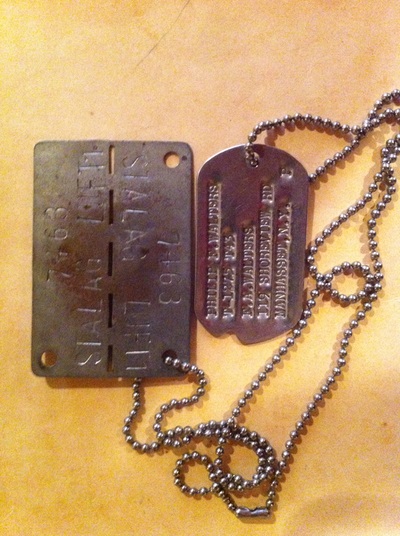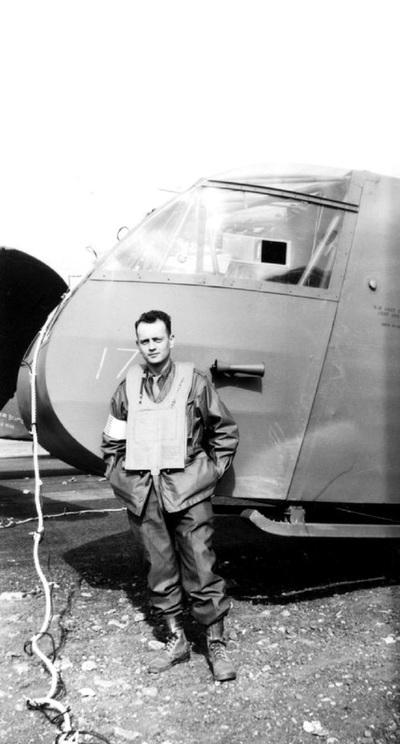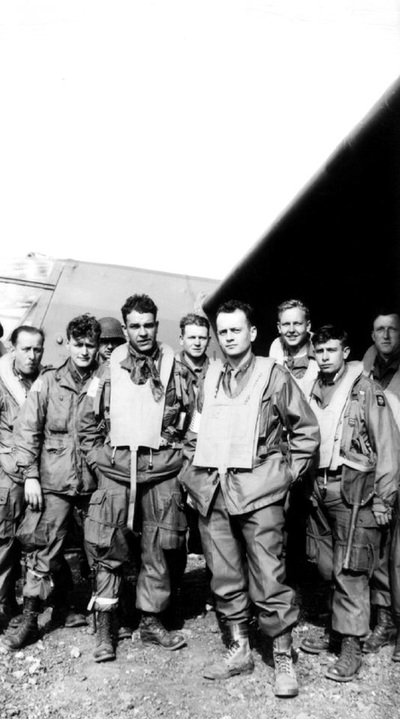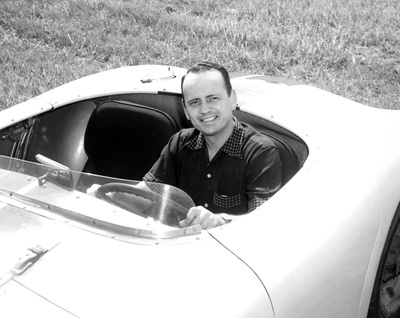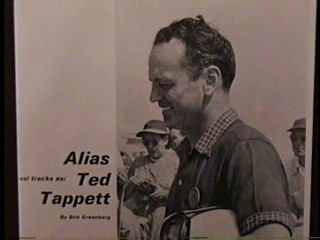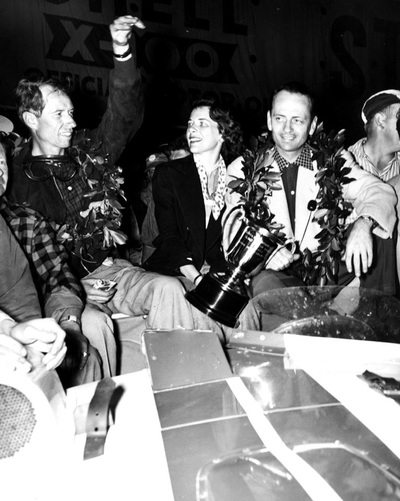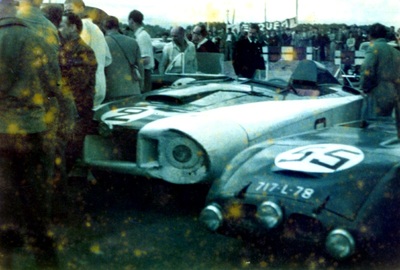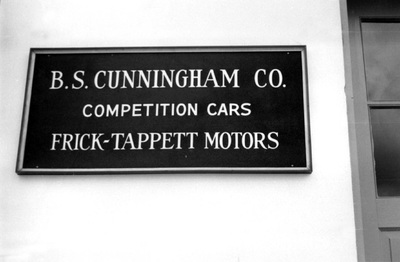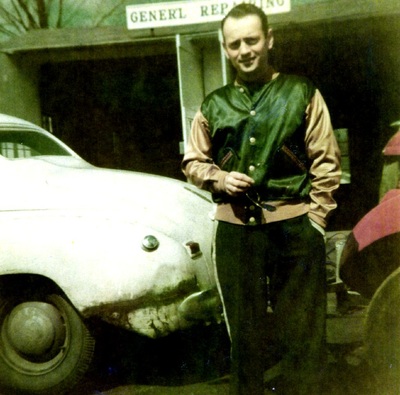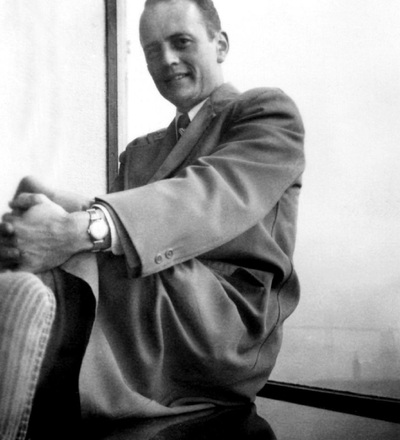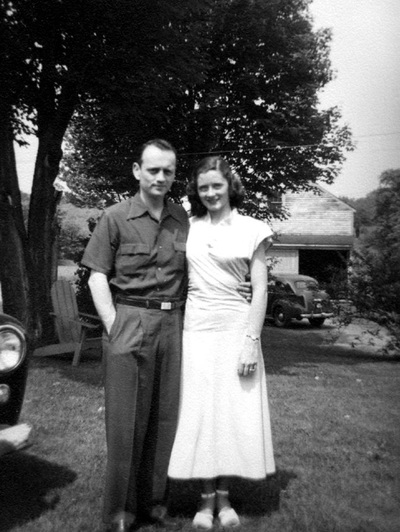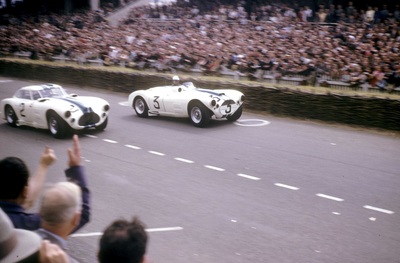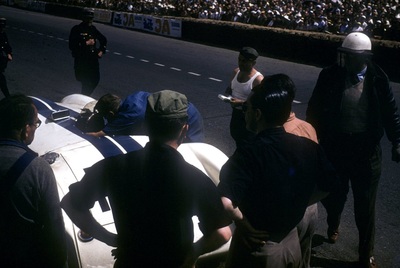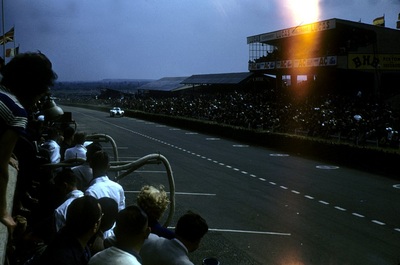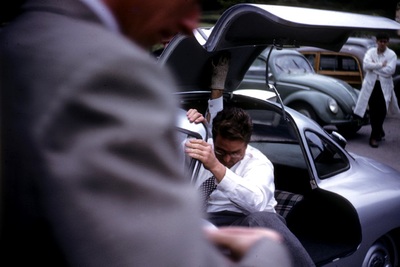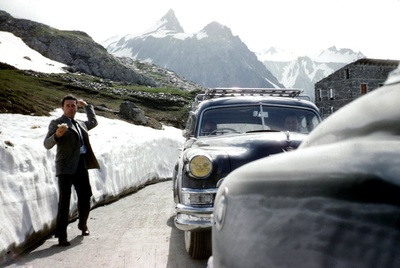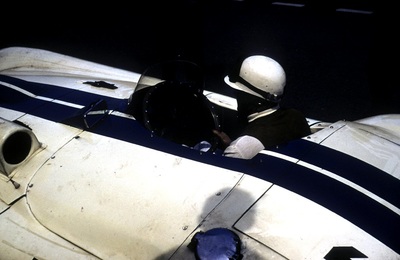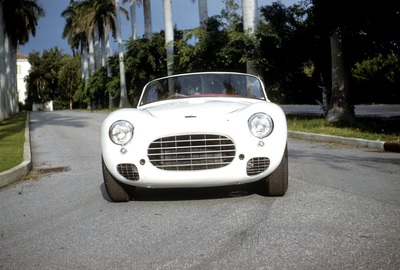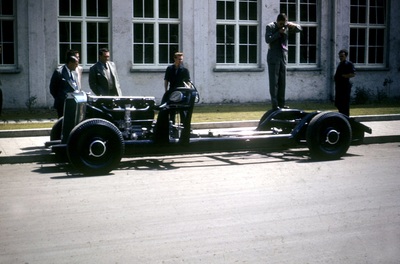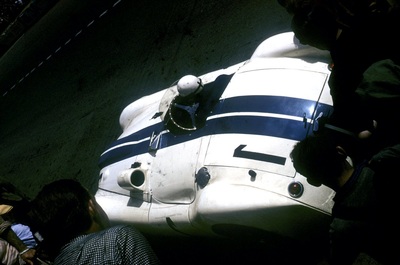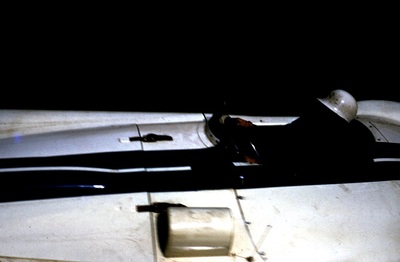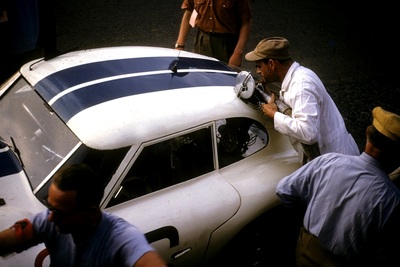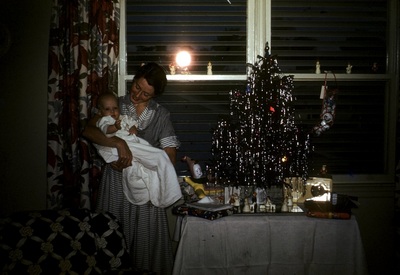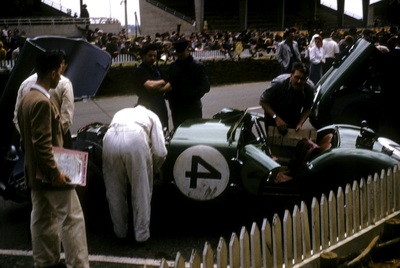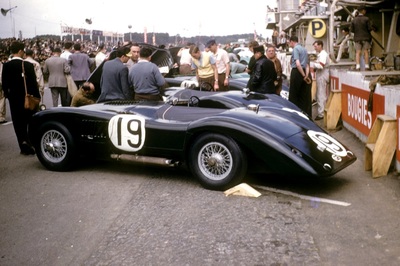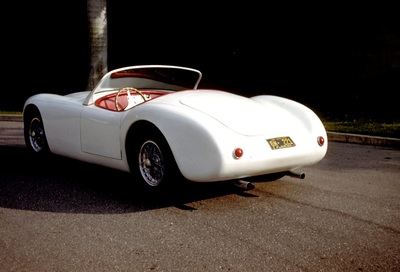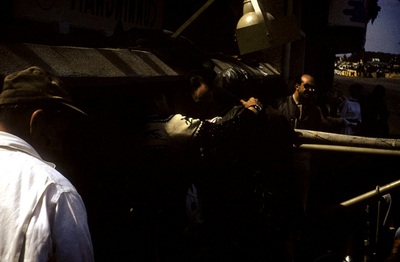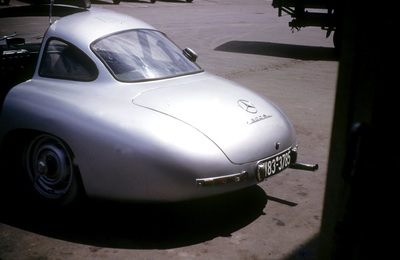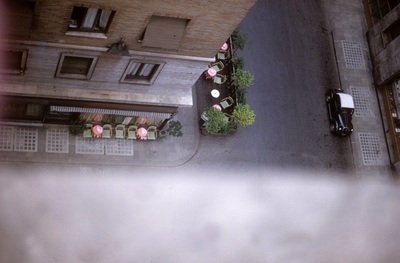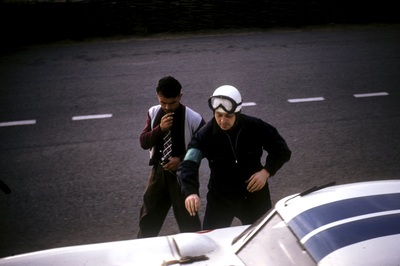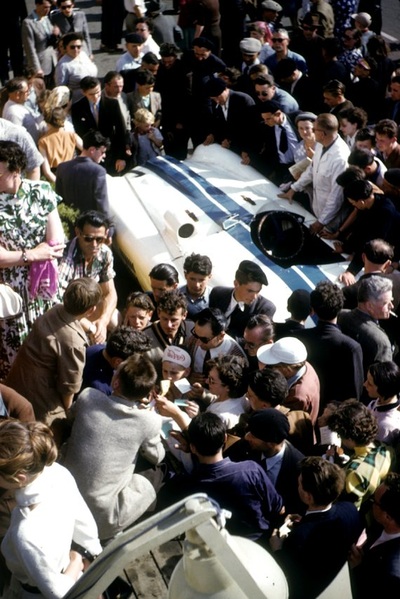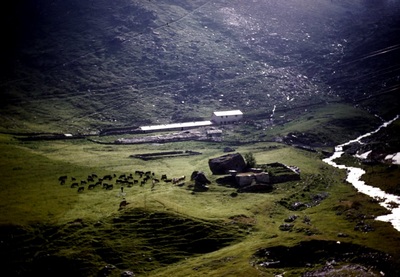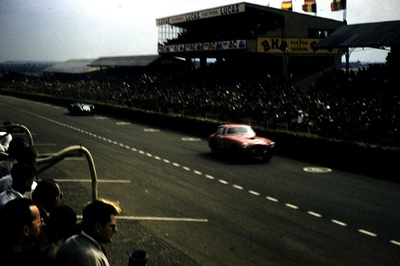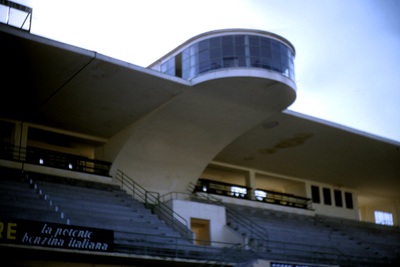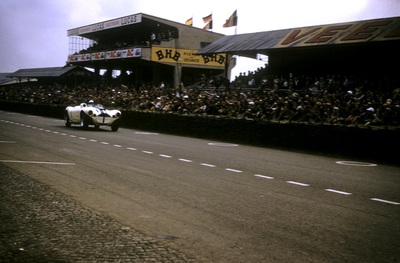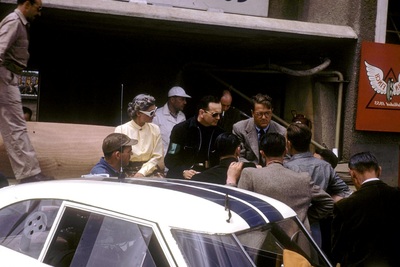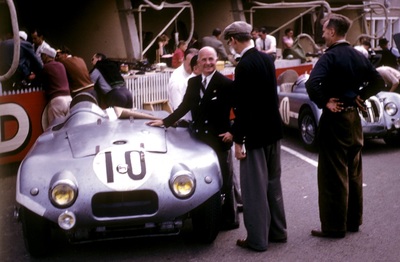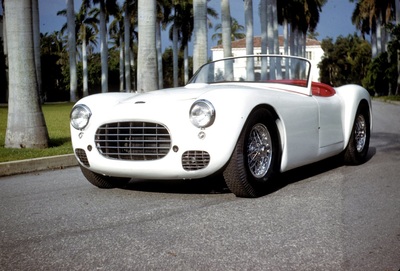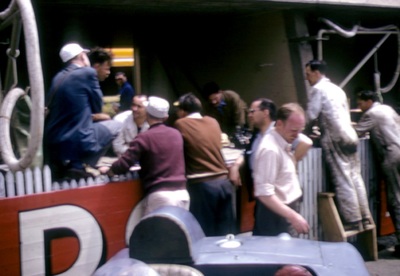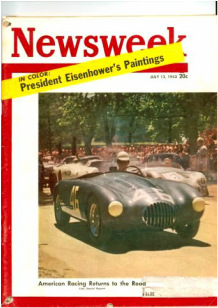
Phil Walters , Linda's dad, had an extraordinarily adventurous life. He spent a good part of his early life in China (his father worked for Standard Oil). He came back to the U.S. in his teens and got into automobile racing with a non de plume of "Ted Tappett" (to keep his parents from finding out). He became famous in the 1930's and 1940's.
When WWII broke out, he became an aviator. He saw action in Africa, Italy, France and Holland. He flew a troop-filled glider into Normandy on D-Day +1. At the briefing, they told him it would be pretty tough (because D-Day was tough) but he told me it was not a big deal. He safely landed his glider, was picked up by a jeep and was back in England that night.
He later flew a glider into Holland during Operation Market Garden in September 1944. At the briefing, they told him it would be a "cakewalk" (compared to D-Day) but though he safely landed his glider and his men, he was shot up, captured within minutes, and held as a POW until the end of the war.
When he returned from the war, he started a business building "Fordillacs" (a Ford chassis and Cadillac engine). He went into a partnership with Briggs Cunningham, built a series of "Cunningham" race cars and among other places, raced at Watkins Glen, LeMans, Sebring, and Bridgehampton. He's in a number of racing Halls of Fame (here and here) and he appeared on the cover of Newsweek magazine in 1953.
He was in the race at Le Mans in 1955 when a car went into the stands and killed 80 spectators. He quit soon thereafter even though Enrico Ferrari personally tried to recruit him as a Formula One racing driver for the Ferrari team. I interviewed him about his racing career in this video in 1996.
When WWII broke out, he became an aviator. He saw action in Africa, Italy, France and Holland. He flew a troop-filled glider into Normandy on D-Day +1. At the briefing, they told him it would be pretty tough (because D-Day was tough) but he told me it was not a big deal. He safely landed his glider, was picked up by a jeep and was back in England that night.
He later flew a glider into Holland during Operation Market Garden in September 1944. At the briefing, they told him it would be a "cakewalk" (compared to D-Day) but though he safely landed his glider and his men, he was shot up, captured within minutes, and held as a POW until the end of the war.
When he returned from the war, he started a business building "Fordillacs" (a Ford chassis and Cadillac engine). He went into a partnership with Briggs Cunningham, built a series of "Cunningham" race cars and among other places, raced at Watkins Glen, LeMans, Sebring, and Bridgehampton. He's in a number of racing Halls of Fame (here and here) and he appeared on the cover of Newsweek magazine in 1953.
He was in the race at Le Mans in 1955 when a car went into the stands and killed 80 spectators. He quit soon thereafter even though Enrico Ferrari personally tried to recruit him as a Formula One racing driver for the Ferrari team. I interviewed him about his racing career in this video in 1996.
Pre-1930's |
Click on the images to see the whole picture |
